Soccer positions can be confusing, especially if you have just started to play soccer. It took me a while to figure out what a sweeper, fullback or central midfielder is, but of course I didn't have access to this information.
Lucky for you, I have created a guide that describes every position in soccer, so just take your time and check out any position that interests you.
Keep in mind also that you should try to play many soccer positions before deciding what position suits you best. My experience is that many soccer players (especially young people) want to play as forwards and strikers.
As you already know, this is not possible because someone has to be fullback, midfielder, goalkeeper and so on. However, just because you don't play these soccer positions, doesn't mean that you will not become a good soccer player.
The Sweeper
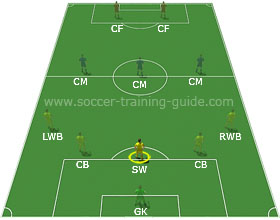 If you want to play as sweeper in soccer you should have a good understanding of the game and also strong leadership abilities. Your main task is to control the defense of your team and to always stay behind your fullbacks.
If you want to play as sweeper in soccer you should have a good understanding of the game and also strong leadership abilities. Your main task is to control the defense of your team and to always stay behind your fullbacks.Center Fullback
 The center fullback’s (or stopper’s) main task is to mark the opposing team forwards or central midfielders. Distributing the ball to the midfielders and playing offensively at intervals is also an important skill if you want to perform well as stopper.
The center fullback’s (or stopper’s) main task is to mark the opposing team forwards or central midfielders. Distributing the ball to the midfielders and playing offensively at intervals is also an important skill if you want to perform well as stopper.Left/Right Fullback
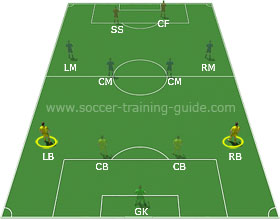 If your team use a flat back formation, your main task would be to mark your opponent’s forwards.Playing fullback in soccer requires that you are dependable and willing to give up any offensive raid. Whether you are playing as right orleft fullback you will still need to concentrate completely on your game in defense.
If your team use a flat back formation, your main task would be to mark your opponent’s forwards.Playing fullback in soccer requires that you are dependable and willing to give up any offensive raid. Whether you are playing as right orleft fullback you will still need to concentrate completely on your game in defense.Wingback
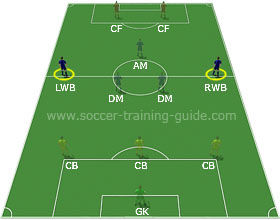 To get a feeling on how to play aswingback, I advise you to study Dani Alves and Maicon which are both playing for Brazil. By doing that you’ll be able to notice what they are doing in particular situations which should give you a brief idea on how to playon this position.
To get a feeling on how to play aswingback, I advise you to study Dani Alves and Maicon which are both playing for Brazil. By doing that you’ll be able to notice what they are doing in particular situations which should give you a brief idea on how to playon this position.Left/Right Midfielder
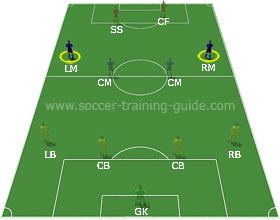 Good crosses in the offense are a requirement to perform well as right or left midfielder. You will also carry the ball up the field because left/right midfielders have more room compared to the center midfielders.
Good crosses in the offense are a requirement to perform well as right or left midfielder. You will also carry the ball up the field because left/right midfielders have more room compared to the center midfielders.Defensive Midfielder
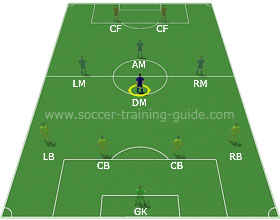 As a defensive midfielder your job is to operate in front of your defense line. You must have enough strength to force yourself to perform to the maximum. Strong character is also a requirement.
As a defensive midfielder your job is to operate in front of your defense line. You must have enough strength to force yourself to perform to the maximum. Strong character is also a requirement.Central Midfielder
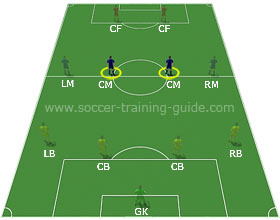 Playing as the central midfielderrequires good passing and ball handling skills. You must alsodistribute the ball safely among the offenders while doing everything to stop or slow down your opponent’s offensive attacks before they reach your last defensive line.
Playing as the central midfielderrequires good passing and ball handling skills. You must alsodistribute the ball safely among the offenders while doing everything to stop or slow down your opponent’s offensive attacks before they reach your last defensive line.The Winger
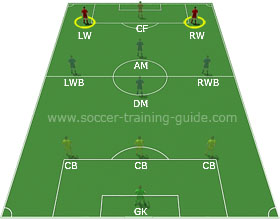 To succeed as winger you should be able to sprint away from your opponents, be able to run 40-50 yards up and down the field, score goals and also serve your teammates with quality crosses. This requires of course a lot of energy which means that your fitness needs to be at the top.
To succeed as winger you should be able to sprint away from your opponents, be able to run 40-50 yards up and down the field, score goals and also serve your teammates with quality crosses. This requires of course a lot of energy which means that your fitness needs to be at the top.Striker
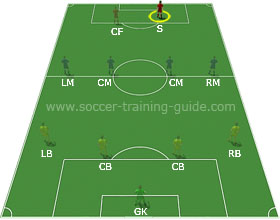 The soccer striker is a type of position where you must be good at scoring goals. Simply, if you don’t score, then you are not performing well. I would say that playing striker is the toughest and most painful position to play. This is because you need to have great soccer dribblingand soccer shooting skills but also because defenders will do everything in their power to stop you. There is no greater feeling then scoring a goal, so don’t give up so easily; instead, try your best and the goals will come.
The soccer striker is a type of position where you must be good at scoring goals. Simply, if you don’t score, then you are not performing well. I would say that playing striker is the toughest and most painful position to play. This is because you need to have great soccer dribblingand soccer shooting skills but also because defenders will do everything in their power to stop you. There is no greater feeling then scoring a goal, so don’t give up so easily; instead, try your best and the goals will come.The Soccer Goalkeeper
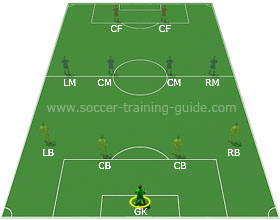 Your job as soccer goalie is to prevent your opponents from scoring. But you need also to encourage your teammates, steer your defensive line and organize attacks.
Your job as soccer goalie is to prevent your opponents from scoring. But you need also to encourage your teammates, steer your defensive line and organize attacks.Second Striker
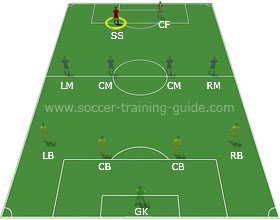 To succeed as second striker you will need to have exceptional ball skills (e.g shooting, passing and dribbling). You will also need to be good at heading and even know how to score goals. Beside that you need to be strong in order to hold off your opponents and shield the ball while waiting for your teammates to catch up.
To succeed as second striker you will need to have exceptional ball skills (e.g shooting, passing and dribbling). You will also need to be good at heading and even know how to score goals. Beside that you need to be strong in order to hold off your opponents and shield the ball while waiting for your teammates to catch up.Centre Forward
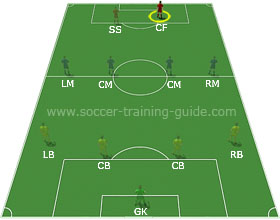 To succeed as centre forward you will need be aggressive, brave and be able to maintain your focus during the whole game. You also need to be prepared to work hard without the ball, know how to dribble your opponents and be able to score goals from any situation.
To succeed as centre forward you will need be aggressive, brave and be able to maintain your focus during the whole game. You also need to be prepared to work hard without the ball, know how to dribble your opponents and be able to score goals from any situation.Attacking/Offensive Midfielder
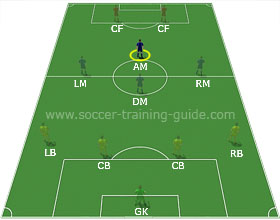 To succeed as offensive midfielderyou will need excellent skills with the ball, be creative intelligent, know how to score goals and also be able to encourage your teammates during the games. You also need to be prepared on criticism because you'll surely receive plenty of that when your team fails to score goals and utilize the attacking strategies that are determined by your coach.
To succeed as offensive midfielderyou will need excellent skills with the ball, be creative intelligent, know how to score goals and also be able to encourage your teammates during the games. You also need to be prepared on criticism because you'll surely receive plenty of that when your team fails to score goals and utilize the attacking strategies that are determined by your coach.